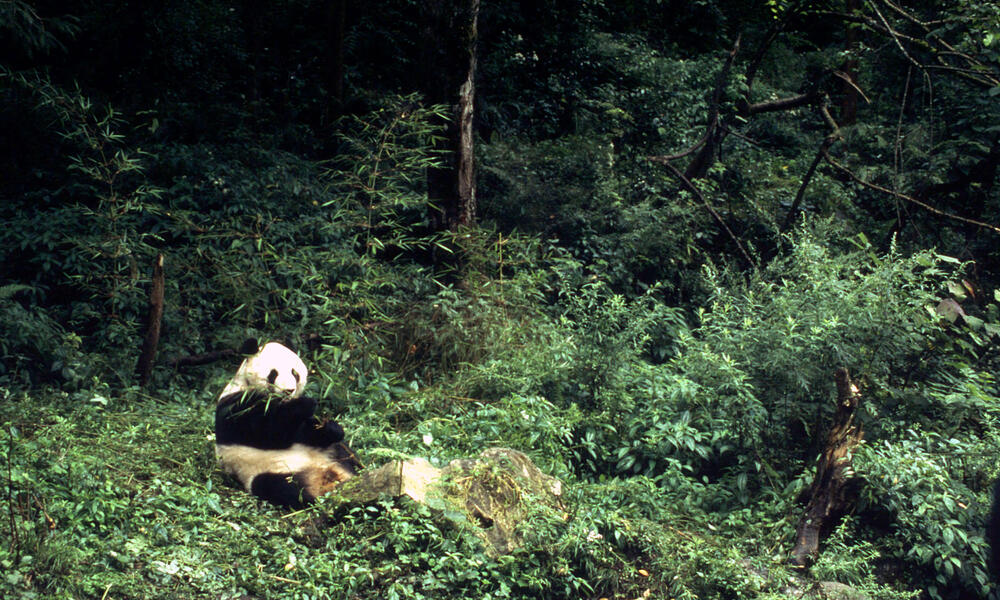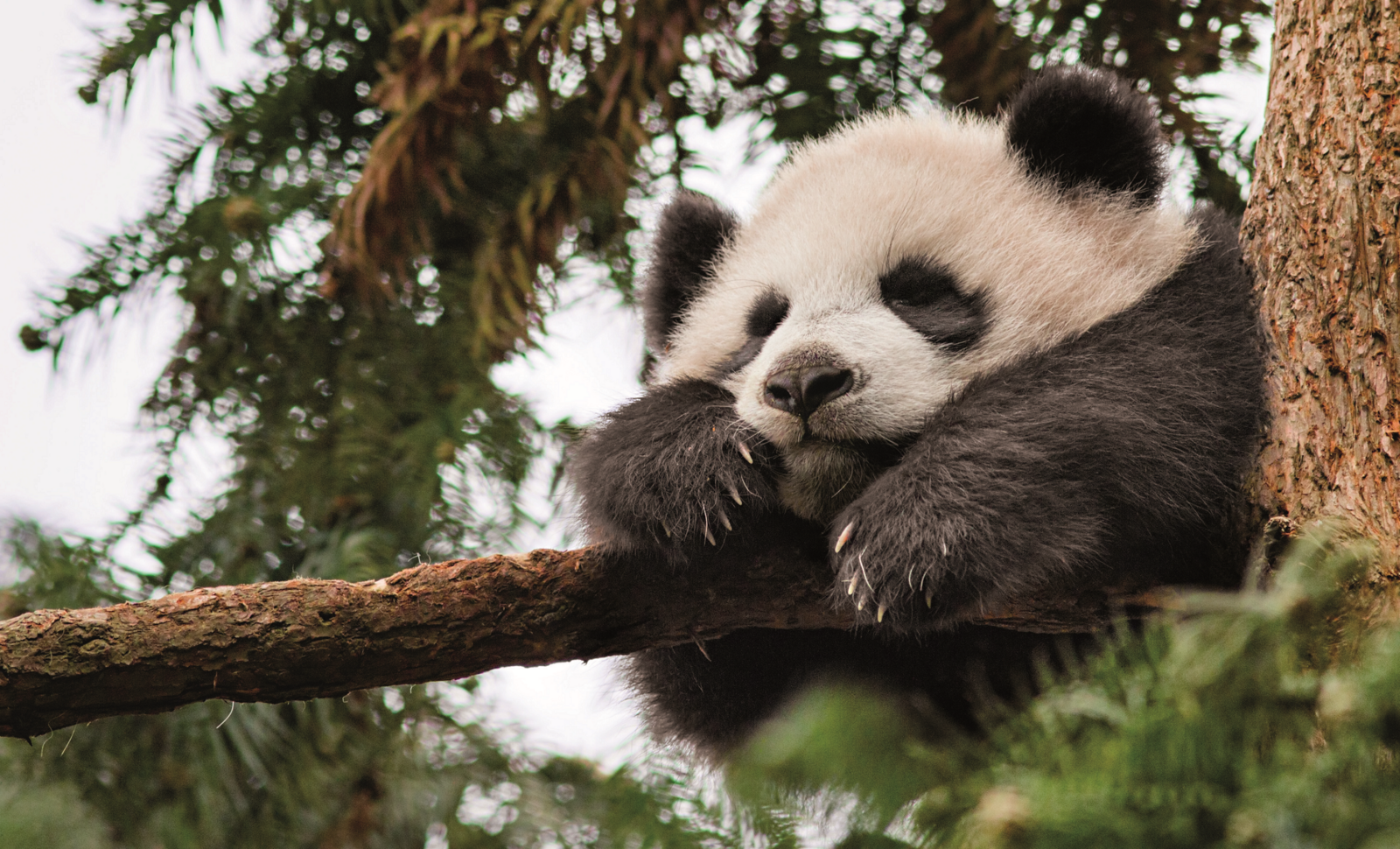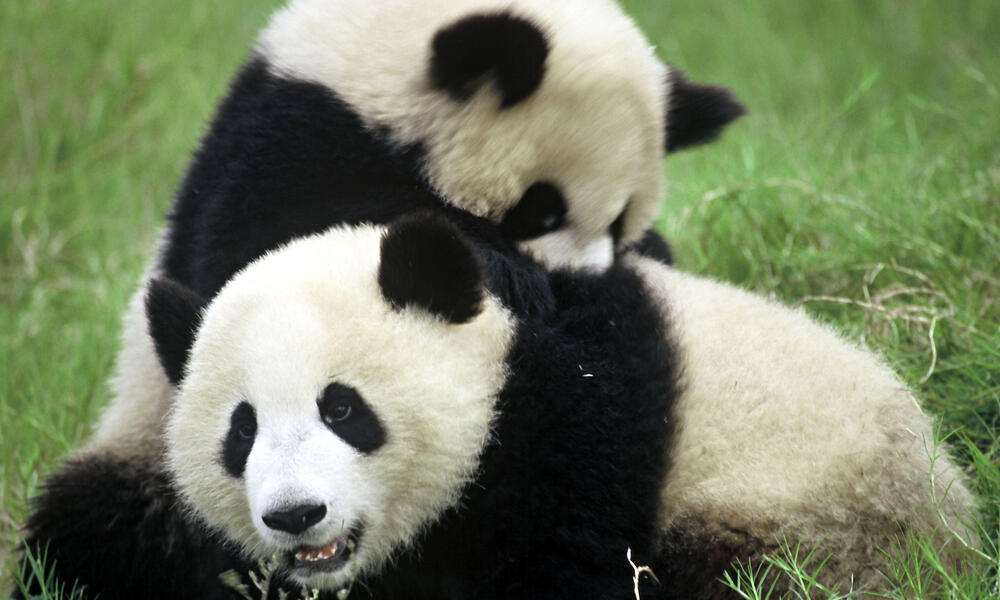The giant panda, also known as panda bear or simply panda, is a bear native to south-central China. They are easily recognized by the large, distinctive black patches around their eyes, ears, and across their round body.
1) Hermits in the bamboo forest
Giant pandas are typically solitary animals, often scattered in dense bamboo bushes, known as "Hermits in the bamboo forest".
2) Confident tree climbers
Pandas are good at climbing trees to escape predators. Other activities such as sunbathing, playing, and courtship are also on trees. Despite their shape, tree-climbing is the instinct of their carnivorous ancestors.
Giant pandas often choose to live near the flowing water of clear springs. Sometimes, they even trek long distances to distant valleys to drink water. Once the water source is found, they often lie by the stream, start drinking non-stop until they become too "drunk" to move.
Giant pandas are carnivorous, but 99% of their diet is more than 20 kinds of bamboo plants growing. With the change of seasons, the bamboo species in the giant panda's diet and the part of the bamboo eaten also differ, and their favorite part is the bamboo shoots.
Bamboo shoots are bamboo sprouts that are newly grown from the underground stems. Their high water content, digestibility, and high nutritional levels make them a delicacy for giant pandas.
From spring to autumn, the giant pandas migrate from the mountainsides to the top of the mountains to find different kinds of bamboo shoots at different altitudes.
People worldwide love giant pandas and care about them. Every time a giant panda goes to a country or region, it sets off a wave of giant pandas fever.
When the World Wildlife Fund (WWF) was established in 1961, it regarded China's giant panda as the flag symbol and emblem in terms of aesthetic value and scientific research.
In September 2016, the International Union for Conservation of Nature (IUCN) announced that pandas had been upgraded from "endangered" to "vulnerable" on the global list of species at risk of extinction, following a population growth of nearly 17% over the past decade.
Yet while this recent status change for pandas is encouraging, they're not out of the woods yet. Says Lo Sze Ping, CEO of WWF-China, "Everyone should celebrate this achievement, but pandas remain scattered and vulnerable."
Edited by Zhu Haiyue
Image Source: WWF (World Wildlife Fund)




